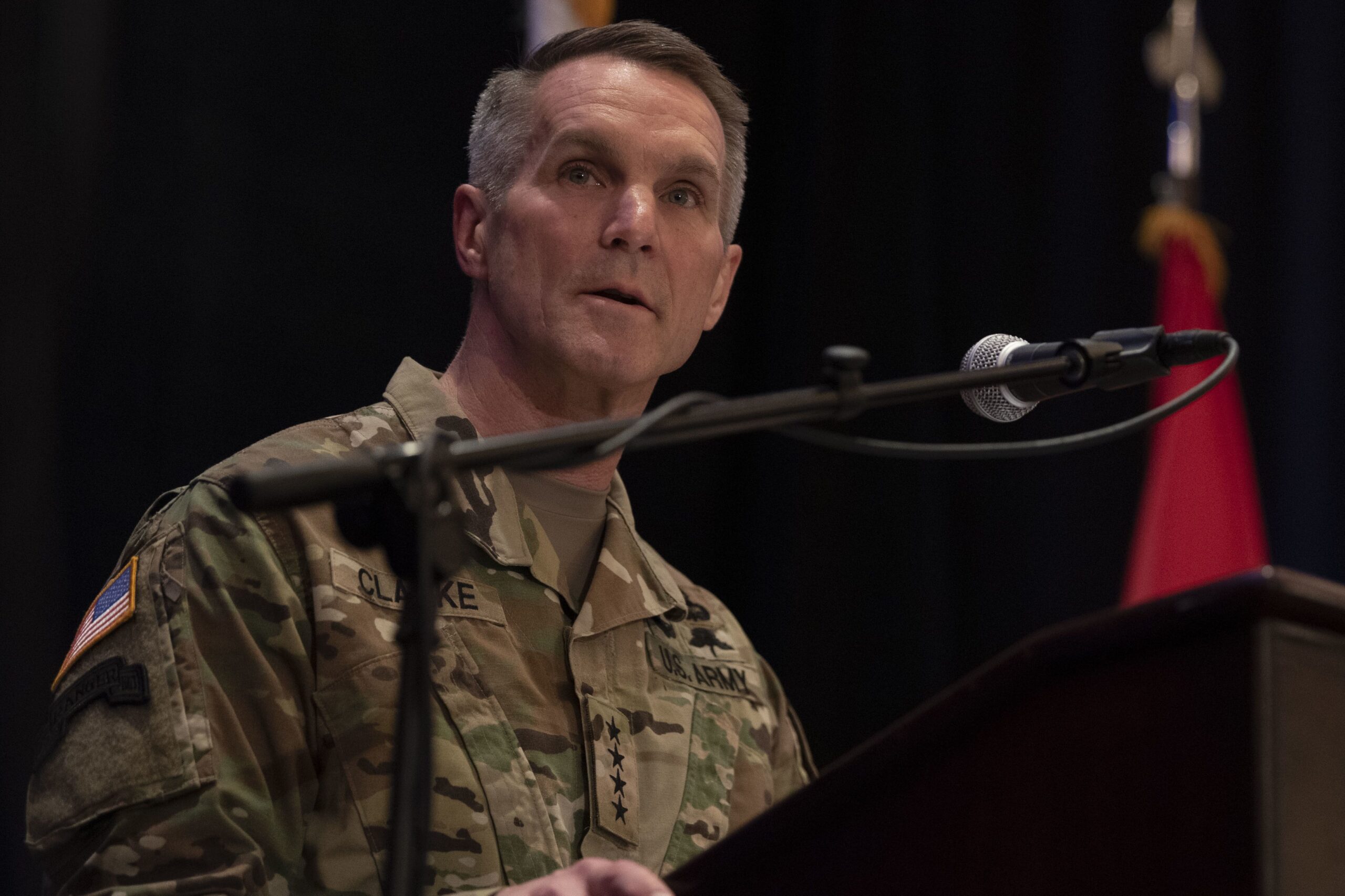
TAMPA, Fla. — Special operations forces had one hell of a February.
In the span of the year’s shortest month, operators from across U.S. Special Operations Command killed the leader of the Islamic State group, Abu Ibrahim al-Hashimi al-Qurayshi, in northwest Syria with mebers of the Syrian Democratic Forces.
That was a more complex raid than the 2012 operation that killed al-Qaida leader Osama bin Laden in Pakistan, according to Gen. Richard Clarke, the head of SOCOM, who spoke Tuesday at the annual Special Operations Forces Industry Conference.
And much of that month represents existing and future priorities for the operation-loaded command. The force faces a range of challenges, including pulling together data and sensor feedback, hiring personnel, and improving information gathering beyond aerial drones, Clarke said.
Later that month, operators were simultaneously conducting training in Alaska and Norway above the Arctic Circle. Navy SEALs dropped in a freefall parachute jump onto ice 200 miles offshore via a U.S. Navy submarine that broke ice to reach them.
That SEAL unit linked up with U.S. Army Green Berets who had trekked and skied across the frozen tundra.
Before February ended, Clarke visited his troops during the exercise Flintlock, which involved more than 10 African and other allied nations to train organizations dedicated to countering violent extremism. But Clarke didn’t get much of a break; at about 4 a.m. local time on Feb. 24, he got a call from Chairman of the Joint Chiefs of Staff Gen. Mark Milley, notifying him that Russia had invaded Ukraine.
That’s a lot packed into 28 days, but any given month from this year would highlight the work of SOCOM’s 70,000 personnel, Clarke said.
Though operational commitments keep the force moving and present their own hurdles, progress comes down to affordability.
Clarke fielded audience questions for half of the hourlong speaking event before 4,000 participants at SOFIC, an event expected to have 14,000 attendees this week. The general highlighted work his command must do to improve maritime capabilities, sensing and intelligence gathering. But the classic “what keeps you up at night” question centered on one area: information.
“I still don’t think we have all the tools that we need to develop and continue to develop at speed [to help] push back inside the information space,” Clarke said.
To fight disinformation and own the information environment, the force needs funding, he said, noting that if his command’s budget doesn’t see 3-5% budget growth over the next five years, then it will struggle to develop, continue its counterterrorism role, and shift to peer and near-peer competition.
Clarke called the current budget “flat” in his remarks. A May 11 report from the Congressional Research Service noted that SOCOM’s fiscal 2022 budget request was for $12.6 billion — a 4% decrease from the fiscal 2021-enacted budget of $13.1 billion.
SOCOM’s vision and strategy, the most recent version of which was published in April, notes these challenges and risks the command faces, including a loss of access to areas, budget shortfalls, degradation of agreements with partners and allies, insufficient investment, and more.
At a granular level, the CRS report highlighted recent events in Ukraine as another factor for SOCOM to consider. The report noted training assistance from special operations forces for Ukraine’s military after Russian annexed Crimea in 2014, among subsequent incursions into eastern Ukraine.
“With some predicting a long conflict in Ukraine, and others suggesting that the conflict might spread, U.S. SOF’s role in the region could potentially increase not only in duration but in scope as well,” the report read.
